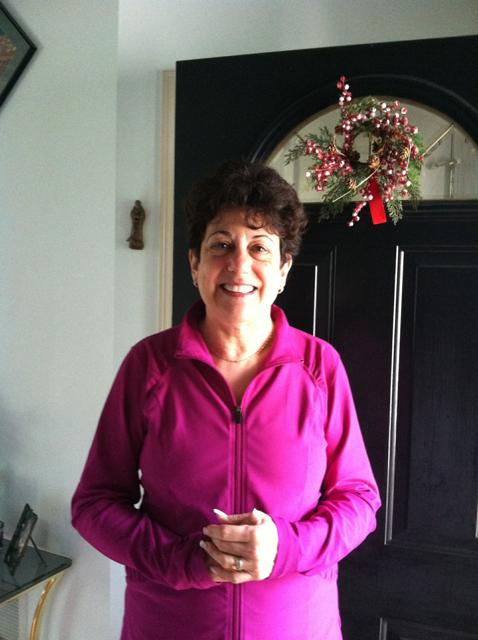Sitting on the couch in her Fairview home, Bonnie Gundlach points to the scar below her left knee where a surgeon removed a malignant melanoma in the late 1980s.
“It was just a new brown spot on my leg; it was pretty innocuous,” Gundlach says, taking a sip of coffee. “It looked like nothing. It wasn’t your usual ugly brown mole, it didn’t have scalloped edges and it wasn’t raised.”
Gundlach believes excessive sun exposure as a teenager and college student in south Florida caused her melanoma. Even though she has never used a tanning bed, she tries to educate others about tanning beds and safe sun exposure.
“Don’t expose yourself to the dangers of skin cancer by using tanning beds. It’s not worth it. The trade-off to have a tan and to lose your life,” Gundlach says, holding her hands as if to weigh the two, “is definitely not worth it. Malignant melanomas are nasty when they metastasize. They can get into your organs, including your liver and brain, and at that point you’re doomed. And they can recur.”
A melanoma diagnosis at the age of 34 changed Gundlach’s life forever. She must wear sunblock when she goes outside, even to garden, and she can’t go to the beach without heavy-duty sunblock, as she calls it.
Gundlach hopes teens will think about the long-term effects tanning has on their bodies.
Meanwhile, a state legislative study commission has gone a step further to try to lower the number of skin-cancer diagnoses. The North Carolina Child Fatality Task Force voted April 16 to ask the legislature to ban anyone younger than 18 from using tanning beds.
Currently, children 13 and younger are prohibited from using tanning beds unless they have a doctor’s prescription.
“I’m really happy they decided to approve it. It was the right thing to do,” says Patricia Bossert, Western North Carolina grassroots manager for the American Cancer Society.
With an estimated 2,360 new cases of melanoma in North Carolina this year, according to ACS, Buncombe County cancer-awareness advocates are educating community members about the potential law change and why they feel it’s important.
Lowering the age a person can legally use a tanning bed will lower the rates of skin cancer, Bossert says, because tanning-bed use leads to a 75-percent increase in the risk of melanoma.
“Melanoma is the most common form of skin cancer for young adults ages 25 to 29 and the second most common form of skin cancer for adolescents ages 15 to 29,” Bossert says. “Teenagers who use tanning beds are more likely to get melanoma. North Carolina already has laws in place to protect children’s health for tobacco, alcohol and some over-the-counter medications, but we don’t have anything to protect teens from tanning beds that lead to skin cancer.”
Bossert says she sees an increase in tanning-bed use in the spring, when teens are concerned about their pale skin and the thought of upcoming proms and vacations.
“People think tan is beautiful,” the 10-year ACS employee says. “I know when I was a teen I didn’t realize (the long-term effects) at all; we used to call it safe sun because we thought it was much better than being out in the sun. Now we know it’s not. I don’t think teens have any concept of many things that might hurt them, such as tobacco and alcohol, but especially tanning beds. It would seem, if you were a teenager, hard to believe that something so bad for you would be legal for anyone to walk in and use.”
For teens who feel the need to have tan skin, Bossert suggests spray-on tans as a safe alternative.
Even though the proposed law change has gained support, ACS now has to educate legislators on the importance of changing the tanning-bed law, Bossert explains. The General Assembly’s short session begins May 16.
“It seems to be a no-brainer to me and to many people who are working on the issue. We may get it started this year, but it’s probably going to be 2013 before we get something major passed, if we do at all,” Bossert says. “I’m very happy, but we’ve got a long ways to go.”
In her fourth year as an ACS volunteer, Gundlach, who also received a breast-cancer diagnosis in 2008, continues to promote cancer prevention by sharing her story of survival. She believes education and awareness are two of the most important factors in helping teens see tanning is a problem.
“If my adventure and my experience can help one person, then it’s worth it. I never thought it could happen to me, and I was wrong,” Gundlach says. “We need to do everything we can to help ourselves. Do good things for yourself and your body and avoid what you’re not supposed to do.”
Gundlach advises teens to “think about the repercussions and know that you won’t be unscathed.”
— Hali Ledford will graduate from UNCA in May with a mass communication degree.




Before you comment
The comments section is here to provide a platform for civil dialogue on the issues we face together as a local community. Xpress is committed to offering this platform for all voices, but when the tone of the discussion gets nasty or strays off topic, we believe many people choose not to participate. Xpress editors are determined to moderate comments to ensure a constructive interchange is maintained. All comments judged not to be in keeping with the spirit of civil discourse will be removed and repeat violators will be banned. See here for our terms of service. Thank you for being part of this effort to promote respectful discussion.